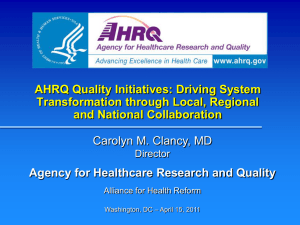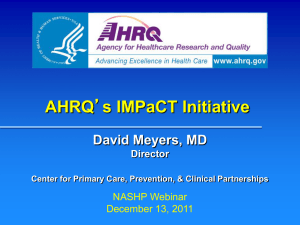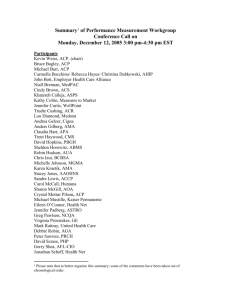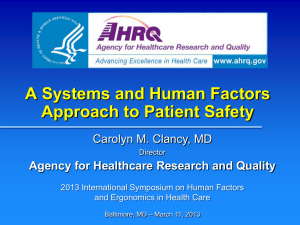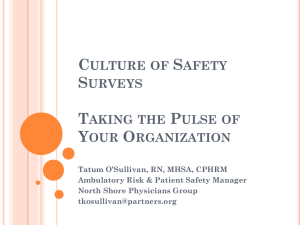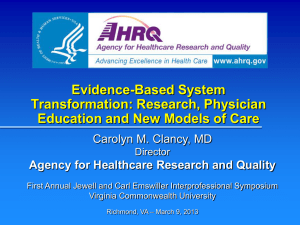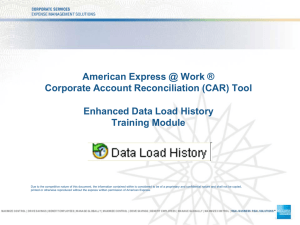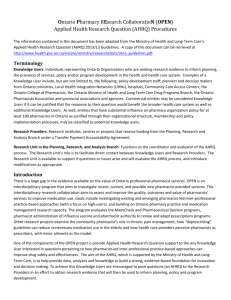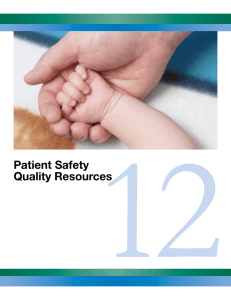Enhanced Recovery (ERAS)
advertisement
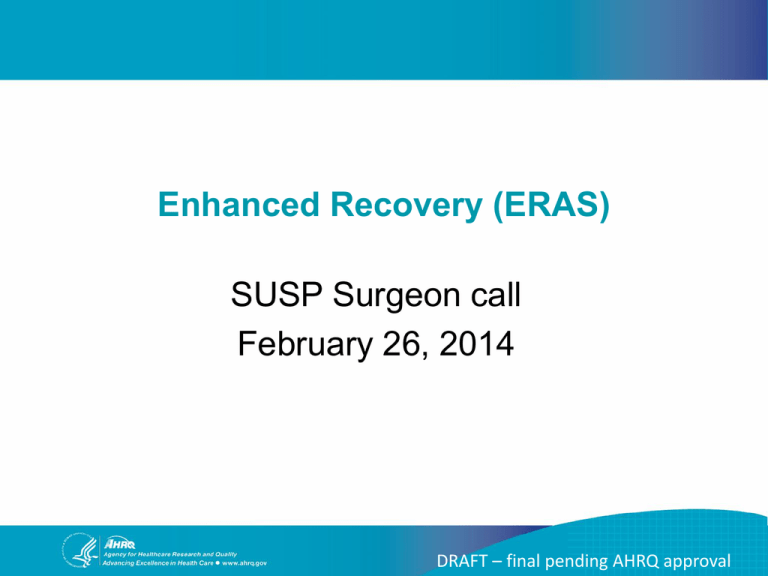
Enhanced Recovery (ERAS) SUSP Surgeon call February 26, 2014 DRAFT – final pending AHRQ approval What is ERAS? First proposed by Dr. Henrik Kehlet, British Anesthesiologist – Multimodal approach to control postoperative pathophysiology and rehabilitation. Br. J. Anaesth. 1997;78:606-617. “The hypothesis that a combination of unimodal evidence based care interventions to enhance recovery will subsequently decrease need for hospitalization, convalescence and morbidity.” Kehlet H. Langenbecks Arch Surg (2011) 396:585–559 Supported by large body of evidence in virtually every field from vascular to bariatrics to Whipple to colorectal DRAFT – final pending AHRQ approval Supporting DATA Dis Colon Rectum 2013 – Meta-analysis of 13 studies demonstrating significantly decreased LOS, complication rate, similar readmit and mortality – Typically all studies demonstrate a 50 – 60% reduction in LOS Duke experience (abstract ASA 2011) – Before/after design demonstrated significant reduction in LOS, surgical site infection, urinary tract infection, hypotension requiring treatment Mayo experience (Lovely J, et al. Br J Surg. 2011;99:120-126.) – Before/after design demonstrated 44% of patients discharged on POD 2, opiod requirements less without increased pain scores, complication rate similar, hospital costs were reduced by an average of $1,039/pt DRAFT – final pending AHRQ approval Goal of ERAS Implement a standardized, patient centered protocol Integrate the pre-operative, intra-operative, post-operative and postdischarges phases of care to reduce LOS Improve patient experience and satisfaction and decrease variability DRAFT – final pending AHRQ approval Basic Principles of ERAS Enhanced Recovery is a multidisciplinary and collaborative approach focusing on: -Patient education and participation -Optimization of perioperative nutrition -Standardization of perioperative anesthetic plan to minimize narcotics, intravenous fluids and post operative nausea and vomiting -Stress relief -Early mobilization and oral intake DRAFT – final pending AHRQ approval Main shifts in mentality Pain management – Goal is to diminish narcotic intake Fluid management – Goal is to avoid volume overload – bowel edema Activity – Goal is to induce early mobility and get the bowels moving! DRAFT – final pending AHRQ approval Develop Clinical Specifics and Standardization of care Clinic Prep Inpatient and ICU unit PACU (pain control and mobilization) Post-op pain control plan DRAFT – final pending AHRQ approval DRAFT – final pending AHRQ approval Financial Analysis DRAFT – final pending AHRQ approval Example of ERAS Pathway at Johns Hopkins Hospital • Identify ERAS patients • Bowel prep and CHG washclothes administered • Targeted preoperative multimodal (electronic, in person and paper) education to set expectations and engage patient in their care Preoperative Clinic Anesthesia clinic appointment • Introduce epidural anesthesia option • Instruction about day of surgery • Carbohydrate drink 2 hrs before surgery • Celebrex, neurontin, tylenol, scopolamine patch pre-op • Standard SSI and DVT prevention • Epidural placed by APS • Heplock placed • Standard Intra-op TIVA by dedicated team of anesthesia providers • Goal directed IV hydration to minimize fluid overload • Early mobilization in recovery room Prep Area Operating Room Recovery Room Postoperative • Standard postoperative ordersets • All patients (with and without epidurals) followed by APS with standard practice and maximal nonnarcotic pain regimen • Coordinated DC planning by case manager • PAL line f/u calls DRAFT – final pending AHRQ approval DRAFT – final pending AHRQ approval ERAS Evaluation Audit of processes (pain regimen, fluid in OR and post-op, education, mobility, diet etc.) Length of Stay Pain scores post-operative HCAPS 30 day Morbidity Readmission Monthly reports and feedback to optimize implementation DRAFT – final pending AHRQ approval Our Model Translating Evidence Into Practice (TRiP) 1. Summarize the evidence in a checklist Reducing Surgical Site Infections Comprehensive Unit based Safety Program (CUSP) • Emerging Evidence 1. Identify local barriers to implementation Educate staff on science of safety • Local Opportunities to Improve 2. Identify defects 3. Measure performance • Collaborative learning 3. 4. Ensure all patients get the evidence • Engage • Educate • Execute • Evaluate Assign executive to adopt unit 4. Learn from one defect per quarter 5. Implement teamwork tools 2. Technical Work Adaptive Work DRAFT – final pending AHRQ approval Discussion DRAFT – final pending AHRQ approval
